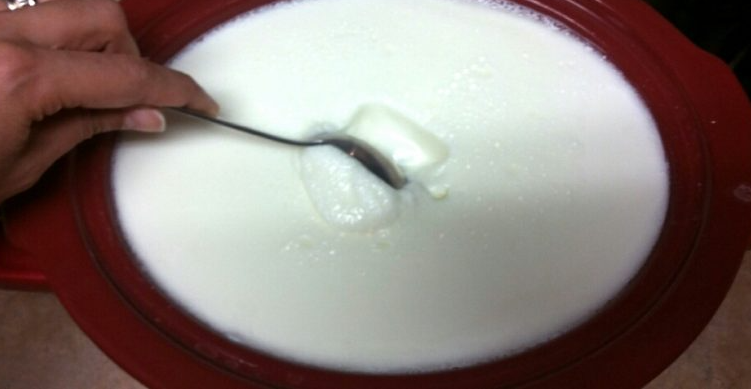Yogurt teems with life. Beneficial bacteria thrive in milk, eating away milk’s natural sugars. That beautiful and ancient microbial process produces yogurt’s distinct tartness. Most thermophilic yogurts culture for
only 8 to 12 hours, but the longer you allow the bacteria to do their work, the more sour and complexly flavored your yogurt will become. I prefer a strongly sour yogurt and favor culturing milk over a longer
period of time—a full day. Over those 24 hours, milk transforms from liquid and sweet to thick and creamy with a striking lemony sourness. If you find that my process produces too strong a yogurt for your liking,
consider culturing your yogurt for a shorter period of time.
MAKES ABOUT 1 QUART
INGREDIENTS
- cups milk
- ¼ cup yogurt from a previous batch or store-bought yogurt with live active cultures
INSTRUCTIONS
- Pour the milk into a saucepan and bring it to a boil over medium heat.
- When bubbles first appear, immediately turn off the heat and allow the milk to cool to 108°F to 112°F.
- Thoroughly whisk the yogurt into the milk so that any clumps dissolve.
- Pour the milk into a quart-sized jar, cover it loosely, and place it somewhere in your kitchen that maintains a constant temperature of 108°F to 112°F. You might choose a yogurt maker, a food dehydrator, a well-insulated cooler filled with warm water, or even a gas oven with a pilot light.
- Allow the milk to culture undisturbed for at least 8 and up to 24 hours while the beneficial bacteria do their work. After 8 hours the yogurt will taste slightly sour, and after 24, the yogurt will taste strikingly sour and lemony.
- The milk will have coagulated and will pull away from the walls of the jar in a solid mass when you tip the jar gently.
- Cover and refrigerate the yogurt and use it within a month or so; remember to spoon about ¼ cup of the yogurt into a small jar to reserve for future batches.





